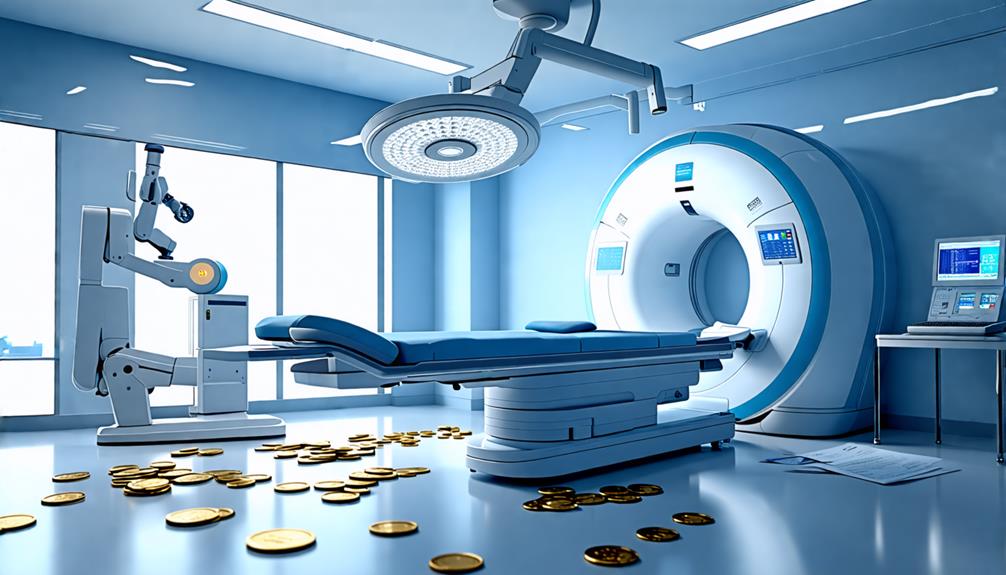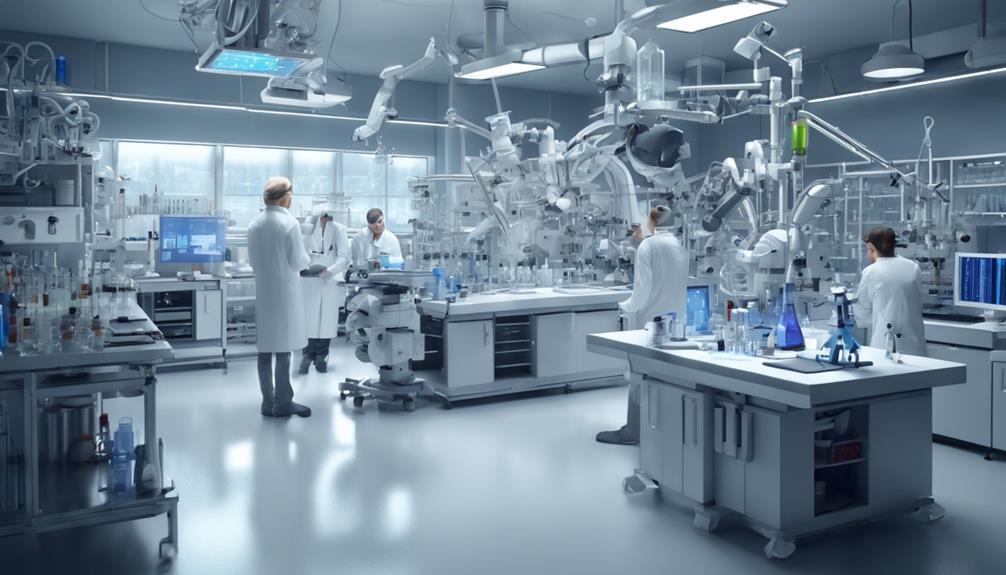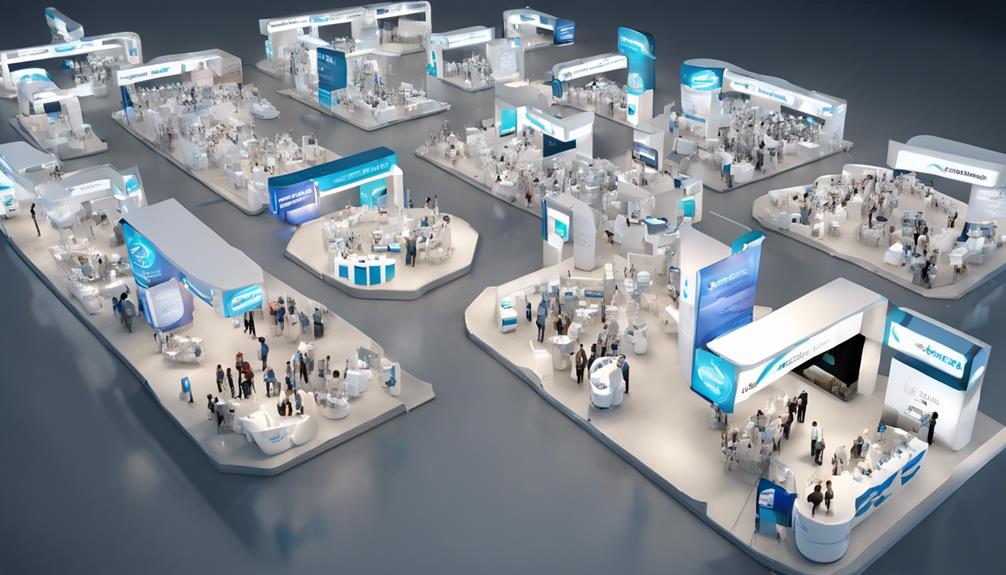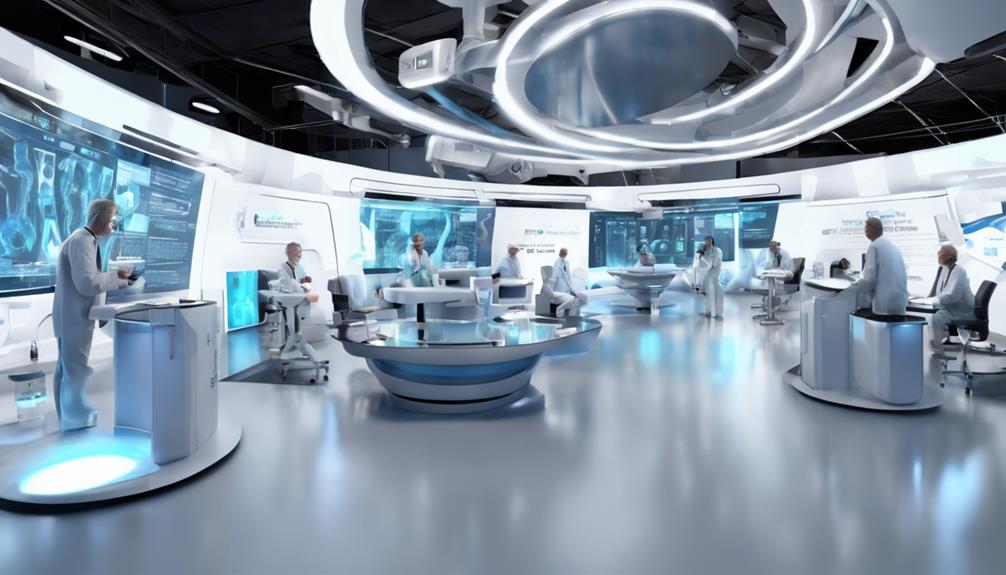
You're dealing with high costs in medical technology primarily because of the extensive investment in research and development, the rigorous processes required for regulatory approval, and the hefty expenses associated with patent protection. These phases demand significant time, expertise, and capital, with a large chunk spent on highly specialized staff and advanced technologies. Furthermore, once a medical technology is developed, companies face additional costs in manufacturing, marketing, and navigating through a monopoly or oligopoly market, which often leads to less competition and higher prices. There's much more to uncover about how these elements interact to shape the pricing of medical technology.
Research and Development Costs

Research and development costs often represent a significant portion of total expenses in the medical technology industry. You'll find that companies pour substantial funds into R&D to innovate and ensure their products aren't only effective but also safe before they even think about market entry. Each phase of development demands a unique blend of expertise, resources, and time, contributing to the hefty price tag.
You're dealing with cutting-edge technology that requires the brightest minds in fields such as biomedical engineering, materials science, and pharmacology. Hiring these experts isn't cheap, and their continuous efforts to refine and perfect a medical device or a new drug inflate the initial investment significantly. Beyond personnel, there's the cost of sophisticated equipment and facilities that maintain stringent quality controls throughout the development process.
Moreover, the nature of this industry means that for every successful product that hits the market, there are numerous others that never make it past the development stage. These failures are costly but essential for the few breakthroughs that revolutionize patient care.
Regulatory Approval Processes
Once a medical technology has been developed, how does it navigate the complex path of regulatory approval? You've got to understand that this stage is crucial and often as intricate as the development itself. Each country has its own regulatory body—like the FDA in the U.S. or the EMA in Europe—that oversees this process.
Initially, your technology must undergo a series of rigorous clinical trials to prove it's safe and effective for public use. This involves multiple phases, each more stringent than the last.
You're also facing heaps of documentation and data analysis. Every detail, from preclinical findings to adverse reactions, must be meticulously recorded and submitted for review. It's a time-consuming and costly affair. Compliance with these regulations isn't just about ticking boxes; it's about ensuring patient safety and product efficacy.
The timeline? It's unpredictable. Depending on your technology's complexity and the trial results, approval could take several years. And remember, any significant modification to your device or its intended use starts this process all over again.
Patent Protection Expenses

Navigating the financial landscape of patent protection is an essential step in securing your medical technology's future. The costs associated with obtaining and maintaining patents can be steep, but they're crucial for protecting your innovations from competitors.
You're not just paying for the patent application itself; there are also legal fees, research costs, and potentially, international filing expenses if you're looking to market globally.
You'll find that securing a patent isn't a one-and-done deal. It's an ongoing investment. Maintaining a patent requires additional payments at various intervals over its lifespan, which can last up to 20 years. These maintenance fees ensure your invention remains protected, preventing others from capitalizing on your hard work without consent.
Moreover, the process isn't just about filing paperwork. It involves detailed documentation of your invention, often requiring legal expertise to craft claims that are both broad enough to prevent workarounds and specific enough to be upheld in court.
This entails considerable attorney fees, which can escalate if your patent faces opposition or infringement issues.
Advanced Manufacturing Techniques
Advanced manufacturing techniques can drastically reduce the time and cost of producing medical technology, enhancing your competitive edge. By integrating technologies like 3D printing, automation, and robotics, you're not only speeding up production rates but also improving the precision and customization of medical devices. This shift not only streamlines manufacturing but also minimizes waste, leading to significant cost savings.
You'll find that by adopting these innovative methods, you're able to better respond to rapid changes in the market or regulatory demands. Techniques such as additive manufacturing allow for on-the-fly design changes without the need for costly tooling adjustments. This flexibility is crucial in an industry where time-to-market can significantly influence the success of a product.
Moreover, these advanced techniques bring down the barriers for prototyping. You can now test and refine products without the hefty initial investment traditionally associated with manufacturing setups. This means you're able to iterate designs more efficiently and achieve higher levels of product customization, catering specifically to patient needs.
Embracing these technologies not only optimizes your production processes but also enhances the overall quality of your medical devices, ensuring you remain at the forefront of healthcare innovation.
Limited Market Competition

Limited market competition can significantly increase the costs of medical technologies. When you're dealing with a market where only a few companies hold the patents or the expertise to produce specific medical devices or technologies, they've essentially got a monopoly or an oligopoly. This lack of competition means there's little incentive for these companies to lower prices. They know you've got fewer alternatives and might feel compelled to pay whatever they ask if the technology is critical.
Moreover, the process of entering the medical technology market isn't as straightforward as launching a general consumer product. Regulatory approvals, which are stringent and time-consuming, act as a significant barrier to new entrants. This further limits the number of players in the market.
You might also notice that in such environments, innovation suffers. Without the pressure of competitors nipping at their heels, established companies may not push as hard to innovate or improve their technologies. While they might still make incremental improvements, the pace and scale of innovation can be less than in a more competitive market, affecting not just costs but also the quality and efficacy of medical technologies available to you.
Training and Education Requirements
While considering the impact of market dynamics on medical technology costs, it's also important to explore how training and education requirements can further influence these expenses. You must understand that the more complex a technology, the more extensive the training needed to use it effectively.
This isn't just about a one-time training session; it involves continuous education to keep up with advancements and ensure patient safety.
Consider the costs associated with training programs for cutting-edge devices like robotic surgery systems or advanced imaging machines. You're looking at specialized, often lengthy courses not just for doctors but for the entire support staff. This drives up the initial investment significantly.
Hospitals and clinics must either absorb these costs or pass them along to you through higher service charges.
Moreover, the certification processes for these technologies are stringent. Health care professionals need to demonstrate their proficiency repeatedly, which means recurrent training sessions.
Each of these sessions isn't just an hour or two; they can be multi-day seminars that often require travel and time away from practice, which adds to the financial burden.
Marketing and Sales Investments

Significant funds are also allocated to the marketing and sales efforts that introduce these technologies to the market. You might wonder why so much is spent in this area, but it's crucial for manufacturers to differentiate their products in a crowded and competitive field. Companies aren't just selling a device; they're selling reliability, precision, and the promise of better patient outcomes. That's a tall order, and it doesn't come cheap.
To ensure their products stand out, companies invest heavily in advertising, trade shows, and direct sales teams. You've likely seen glossy ads in medical journals or impressive displays at industry conferences. Each of these marketing efforts aims to catch the eye of hospital decision-makers and clinicians who recommend or decide on the technology purchases.
Furthermore, the sales process for medical technology is often long and complex. Sales teams don't just need to understand the technology; they must also be adept at navigating the regulatory landscape, understanding the specific needs of healthcare providers, and effectively communicating the long-term benefits of their products over competitors'.
This depth of knowledge and engagement requires substantial investment in training and support for the sales force, ensuring they're equipped to handle such a demanding and critical role in healthcare.
Infrastructure and Maintenance Costs
Beyond the initial purchase, you'll also face ongoing infrastructure and maintenance costs to keep medical technology operational. It's not just about buying the equipment; you're investing in its longevity and effectiveness.
Imagine you've just acquired a state-of-the-art MRI machine. To ensure it functions correctly, you'll need a suitably controlled environment, which includes precise temperature and humidity controls, and often, specialized electrical installations.
You're also looking at regular maintenance checks and repairs. These machines aren't set-and-forget. They require periodic updates, calibration, and sometimes, replacement of parts, which aren't always readily available or cheap.
Think about the software updates too, which are crucial for keeping the technology up to standards and secure against cyber threats.
Training your staff to use this technology effectively is another hidden cost. Whether it's a new surgical device or a complex diagnostic tool, your team needs to be proficient to ensure patient safety and the best outcomes. This often involves ongoing training sessions, which can be quite costly.
All these factors contribute to the total cost of ownership of medical technology. It's not just what you pay upfront; it's also about what you must continue to pay to ensure its utility and efficacy.
Economic Impact on Healthcare Systems

The high costs of medical technology not only strain healthcare budgets but also affect the overall economic stability of healthcare systems. As you explore the ways these costs manifest, you'll see that they're not just numbers on a balance sheet. They ripple through the entire economy.
When hospitals and clinics invest heavily in advanced technology, they must pass on some of these costs to you, the patient, through higher medical fees. This, in turn, leads to increased insurance premiums and out-of-pocket expenses. You might find yourself choosing between essential healthcare and other critical expenses, a choice no one should have to make.
Moreover, the focus on cutting-edge equipment can divert funds from other vital areas such as staff training and patient education. This misallocation can undermine the quality of healthcare, affecting patient outcomes and satisfaction. Poorer outcomes can reduce productivity due to increased illness and longer recovery times, impacting the broader economy.
Additionally, if healthcare providers can't manage these technology costs, they might cut corners elsewhere, potentially compromising patient safety.
You see, the economic implications are vast and multifaceted, influencing everything from personal finances to national economic performance. Understanding these impacts helps you grasp why managing these costs is crucial for sustainable healthcare.
Frequently Asked Questions
How Do Malpractice Insurance Costs Impact Medical Technology Pricing?
Malpractice insurance costs significantly impact medical technology pricing because they increase overall expenses for healthcare providers, who then pass these costs onto you through higher prices for medical services and technologies.
What Role Does Medical Tourism Play in Technology Adoption Rates?
Medical tourism influences technology adoption rates as you seek cheaper, advanced treatments abroad, prompting local healthcare providers to adopt new technologies to remain competitive and retain patients. It's a global race in healthcare innovation.
How Does Consumer Demand Influence Medical Technology Advancements?
You're seeing more innovative medical devices because your demand for cutting-edge treatments pushes companies to develop advanced technologies. This consumer interest directly influences the pace and direction of technological advancements in healthcare.
What Ethical Considerations Affect Pricing in Medical Technology?
You should consider how ethical dilemmas, like access to care and profit margins, impact medical tech pricing. Balancing innovation with fairness challenges developers to price responsibly without compromising on quality or accessibility.
How Do Environmental Factors Impact the Lifespan of Medical Technologies?
Environmental factors like humidity, temperature, and dust can significantly shorten the lifespan of medical technologies. You'll find that proper care and controlled environments are crucial to maintain their functionality and effectiveness.
Conclusion
You've seen why medical technology costs so much.
The lengthy research and development, strict regulatory approvals, and patent costs add up. Advanced manufacturing isn't cheap, and the limited competition keeps prices high.
Training healthcare professionals and maintaining the necessary infrastructure further inflate the bill. Even marketing has its price tag.
All these factors combine, significantly impacting healthcare systems economically.
It's a complex web of expenses, but understanding them helps you grasp the high costs associated with medical technology.






